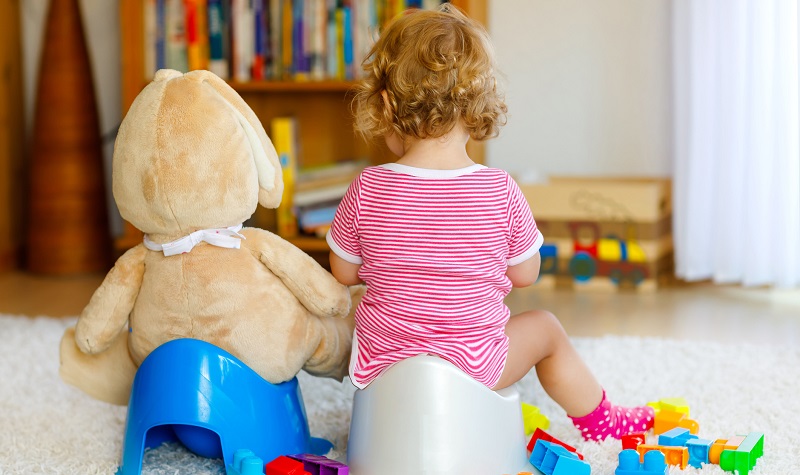
It can be challenging to teach your child how to use the toilet correctly. Additionally, developing a toileting routine may take longer and present additional challenges if your child is on the spectrum.
Children with ASD had a higher prevalence of toileting resistance (49.1%). Issues can range from children not being trained at all by the time they reach school age, to being trained to use the toilet during the day but still having nocturnal enuresis, to being trained to control bladder function but not bowel function. These issues can persist throughout childhood and across the spectrum of ASD, resulting in several negative consequences for both children and their families.
What are the toileting problems in children with ASD?
The majority of ASD kids have trouble using the bathroom. A delay in toilet training, a reluctance or refusal to use the restroom or an unwillingness to pass urine or feces at all are all examples of this. Problems with toilet training could be caused by the following:
● GASTRO-INTESTINAL ISSUES
For instance, constipation can make going to the bathroom painful, so the child avoids it, which makes the condition worse and keeps the child stuck in a vicious cycle.
● MOTOR PROBLEMS
It’s possible that children whose motor skills develop slowly do not have full control over their bowels or bladder.
● NEED FOR CONTROL/ROUTINE
Children with ASD need the world to be predictable, and bowel movements can feel scarily out of their control.
● COMMUNICATION PROBLEMS
The child may not be able to tell you when they need to go to the bathroom or comprehend your instructions or attempts to teach them.
● SENSORY ISSUES
This could be a dislike of the sound of the toilet, the sensation of passing urine or feces, a dislike of the cold seat on the toilet, or an obsession with the water in the toilet.
What are the signs that children with ASD are ready for toilet training?
In most cases, children with ASD exhibit the same signs of readiness for toilet training as typical children. However, these symptoms may appear in older ASD children, and training may take longer. Among the indications that your child is prepared are:
● when your child has begun to become aware of needing to go to the toilet
● if you notice changes in their behavior patterns, such as appearing distracted or fidgeting when they are wet or have soiled
● when they let you know when they need to change
● you have observed that your child is aware that they have started/finished peeing or pooing
● your child has shown an interest in using or used the toilet themselves without being prompted
How to toilet-train a child with autism?
It takes a lot of thought and planning ahead of time to successfully toilet-train children with spectrum disorders. Being unprepared can lead to frustration for both parent and child. Here are some tips to help toilet train your child with autism:
1. GET EVERYTHING YOU’LL NEED READY. For a positive experience, it is essential to gather all the necessary materials. Before beginning the process of toilet training, the following items can be prepared:
a. Toilet training seat or a transitional potty
b. Toilet paper or flushable toilet wipes which are easier to use
c. Timer
d. A basket filled with fun activities and toys to keep the child entertained
e. A reinforcement basket with rewards like your child’s favorite toys, stickers, and treats
f. Visual support such as picture cards, potty training books, and social stories
g. Toilet training data sheet where you will track the success of toilet training.
2. SET UP THE BATHROOM. You can begin setting up the bathroom as soon as you have all the necessary items ready. If you have multiple bathrooms in your home, designate the bathroom that your child is most at ease using for training. Here’s what you can do:
a. Position a toilet training seat on the toilet
b. Place your child’s underwear, toilet wipes, and the timer in the bathroom.
c. Place the activity basket within reach of your child. Easy access to books and toys without having to get up from the toilet is important.
d. Display picture cards or other visual support close to the toilet where your child can easily see them.
e. Tape the toilet training data sheet on the wall outside of the bathroom.
3. SCHEDULE. Make toilet trips part of your routine. Stick with the same times of the day or the same daily activities.
4. COMMUNICATE. Use the same simple words, signs, or pictures during each trip. This helps a child learn the toileting language.
5. USE PRAISE AND REWARDS. Reward-based positive reinforcement is a successful strategy for toilet training ASD children. For your child to comprehend that the rewards are connected to a particular behavior, they must be immediate and consistent, such as praise, a hug, or a favorite activity.
Toilet training your child with autism or similar condition can be a little more challenging, but with time and patience you likely will be able to do it, and your child will learn the skills. You’re never alone in these instances, don’t be afraid to ask for professional help when issues persist. Let people know what you’re going through so they know how best to support you and your child.
Our dedicated team is ready to assist you if you require assistance or have questions about your child’s toileting habits. We are always available to help you with your family’s needs and answer your questions.
CONTACT US TODAY FOR A CONSULTATION!
Written by: Alex Liau
Published on 16 January 2023





